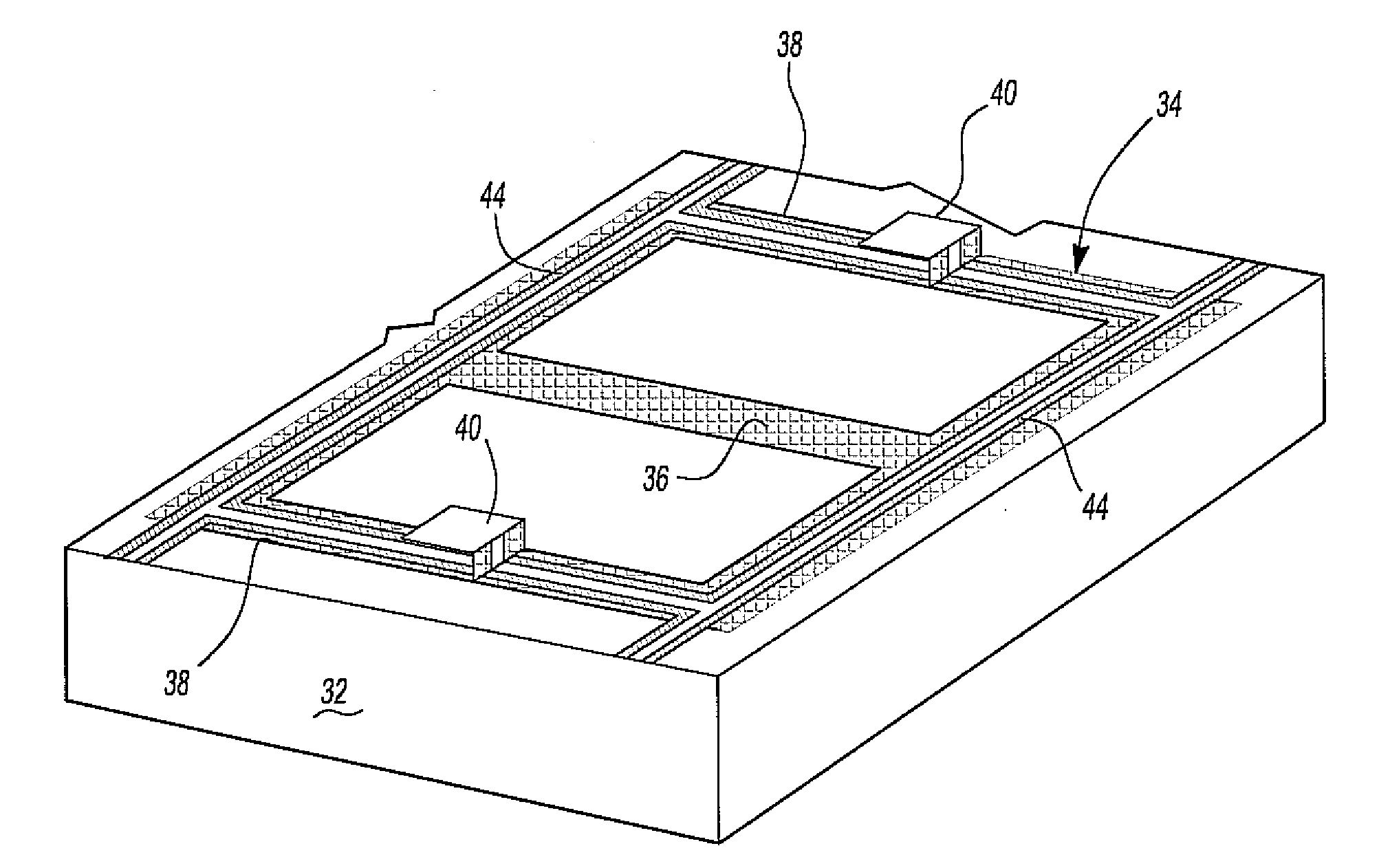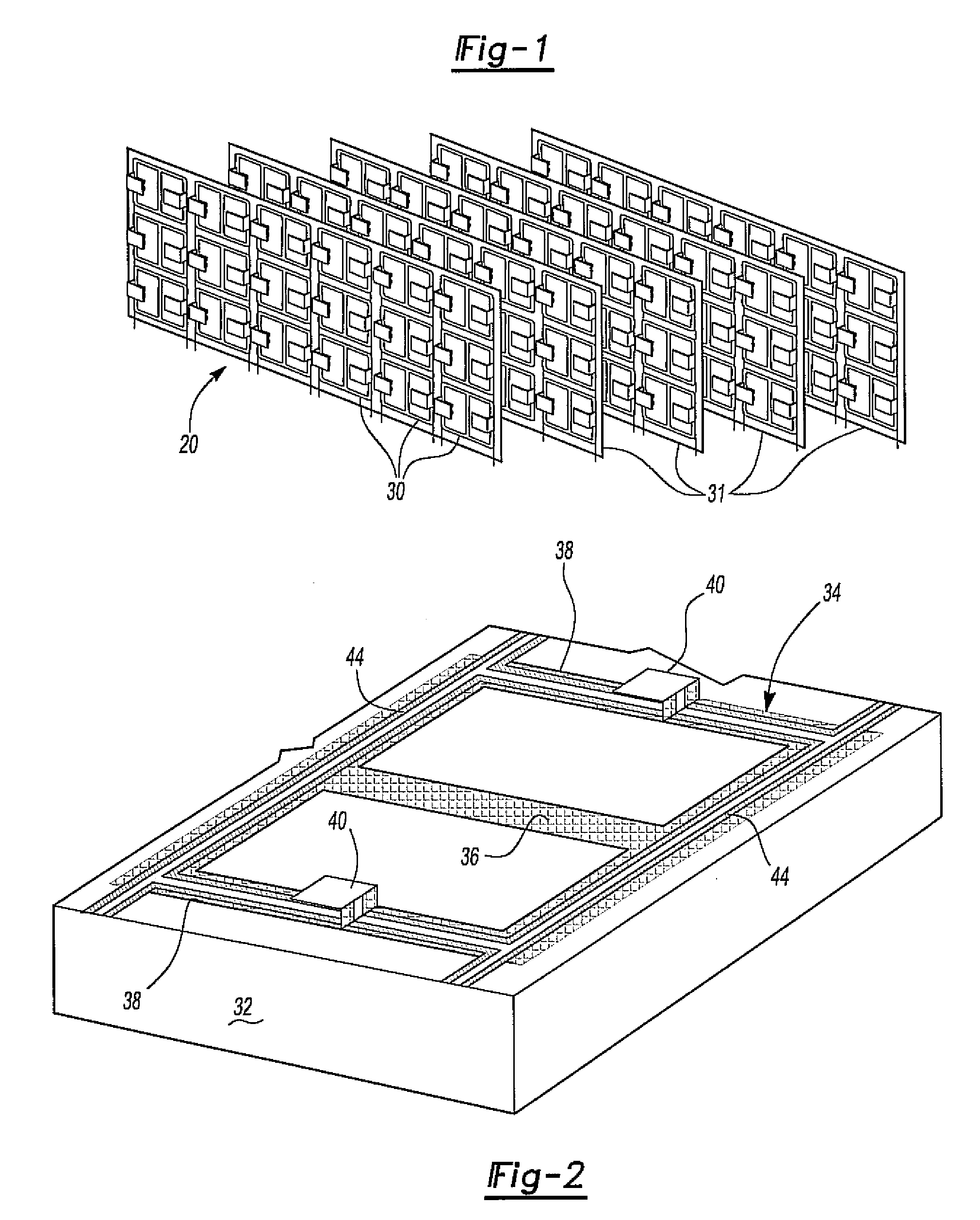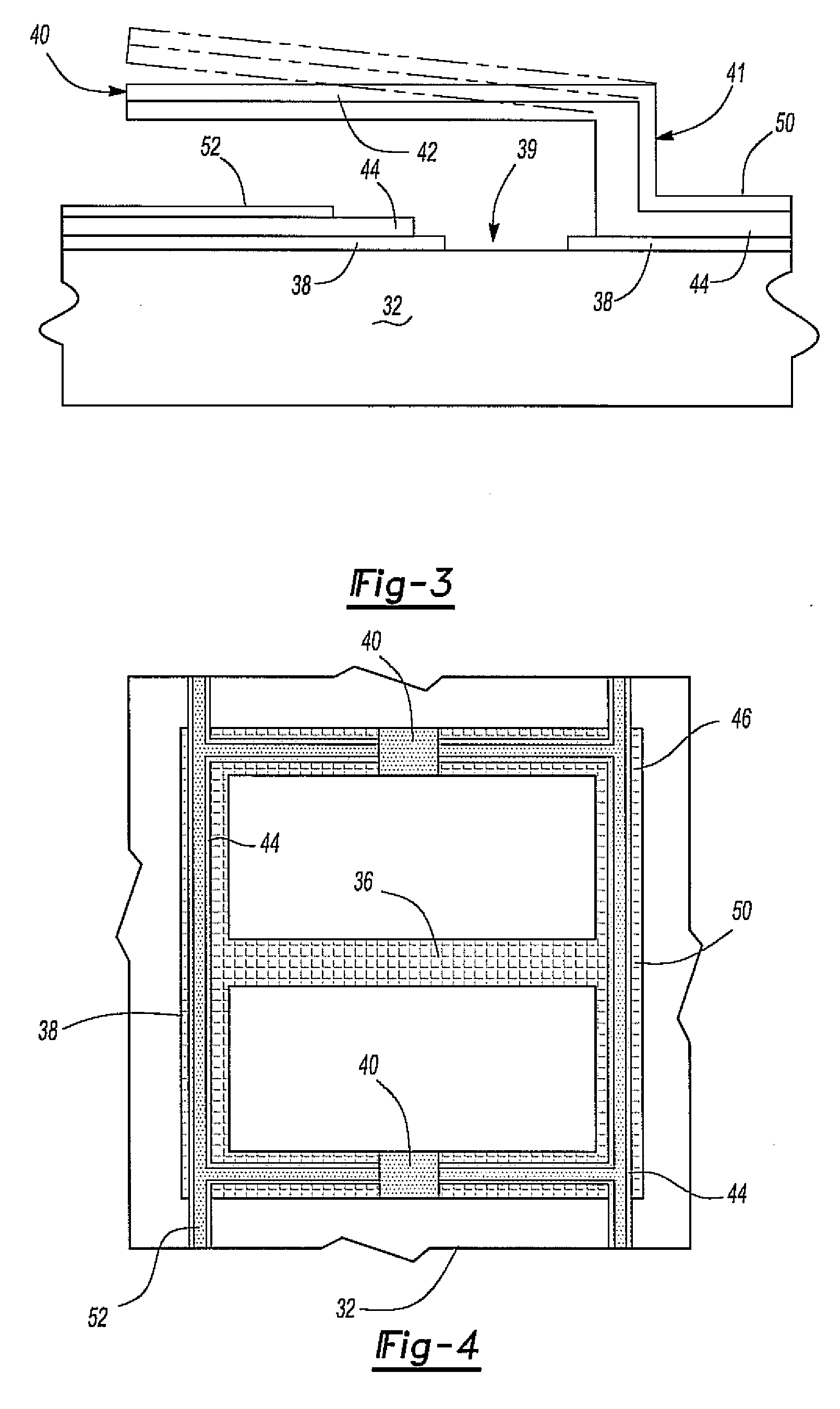Microwave lens
a micro-wave lens and lens technology, applied in the field of micro-wave lenses, can solve the problem of fixed resonance frequency of metamaterials and lens components, and achieve the effect of reducing the frequency of lens components
- Summary
- Abstract
- Description
- Claims
- Application Information
AI Technical Summary
Benefits of technology
Problems solved by technology
Method used
Image
Examples
Embodiment Construction
[0019]With reference first to FIG. 1, a microwave lens 20 is shown which comprises a plurality of electronic inductive capacitive (ELC) resonator cells 30. These cells are arranged in a planar array 32. Each array, furthermore, is illustrated in FIG. 1 as being rectangular in shape, although other shapes may be utilized without deviation from the spirit or scope of the invention.
[0020]Although a single planar array 32 may be used to form the microwave lens, more typically a plurality of planar arrays 32 are stacked on top of each other to form the lens.
[0021]With reference now particularly to FIG. 2, a single resonator cell 30 is illustrated. The resonator cell 30 includes a substrate 32 made of an electrical insulating material. A conductive pattern 34 is then formed on the substrate 32 using conventional manufacturing techniques.
[0022]The pattern 34 includes a central leg 36 and two side legs 38 which are spaced apart and generally parallel to each other. The pattern of the resona...
PUM
 Login to View More
Login to View More Abstract
Description
Claims
Application Information
 Login to View More
Login to View More - R&D
- Intellectual Property
- Life Sciences
- Materials
- Tech Scout
- Unparalleled Data Quality
- Higher Quality Content
- 60% Fewer Hallucinations
Browse by: Latest US Patents, China's latest patents, Technical Efficacy Thesaurus, Application Domain, Technology Topic, Popular Technical Reports.
© 2025 PatSnap. All rights reserved.Legal|Privacy policy|Modern Slavery Act Transparency Statement|Sitemap|About US| Contact US: help@patsnap.com



